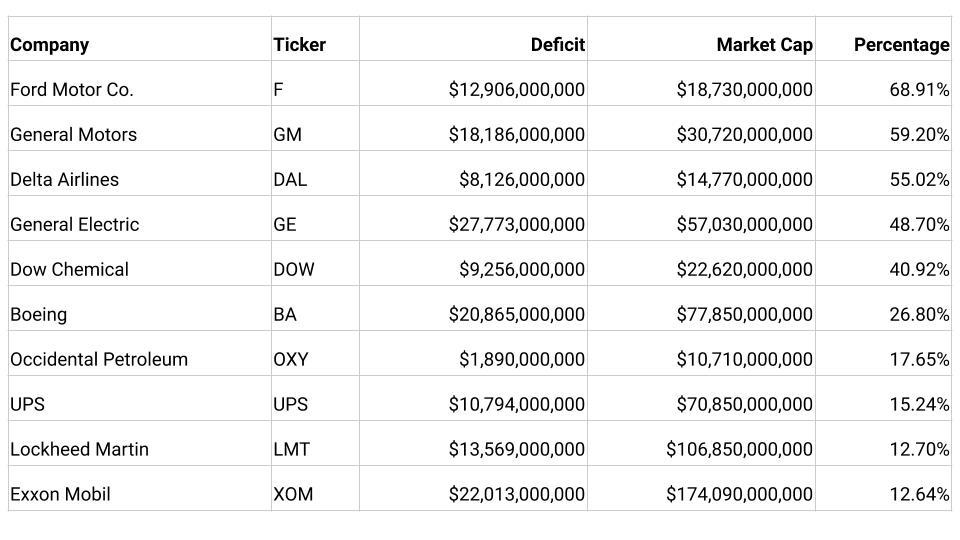The crack Calcbench research team has done it again, releasing a fresh report this week about the assets and liabilities in corporate pension plans — and the $394 billion gap between those two points.
The report, “Pension Plan Obligations: Analysis of funding levels and shortfalls among the S&P 500,” reviewed the funding levels of defined-benefit plans offered by 292 firms in the S&P 500. Among the findings:
- Of 292 firms in the S&P 500 that we identified as offering pension plans, only 40 were fully funded as of Dec. 31, 2019. The other 252 firms were under-funded.
- Among the 252 firms with under-funded plans, their total obligations were $1.95 trillion while total assets were only $1.55 trillion — a gap of $394 billion, or 25.3 percent.
- The largest funding gap in dollar terms was a $27.7 billion shortfall at General Electric ($GE).
- The largest funding gap in percentage terms was at Omnicom Group ($OMC), which has $293.5 billion in pension obligations but only $64.3 billion in assets — a shortfall of 78 percent.
- Only a handful of firms were severely under-funded. 78 firms were under-funded by 0 to 10 percent, and another 63 firms were under-funded by 10 to 20 percent.
- General Motors ($GM), Ford Motor Co. ($F), and Delta Airlines ($DAL) each had shortfalls in their pension plans equalled more than half of their market cap as of mid-April — a warning that the firms’ future value could be jeopardized by pension plan liabilities.
The research raises some interesting questions about corporate pension plans. Firms don’t need to keep their pension plans fully funded at all times — but they do need to meet all those obligations eventually. So for firms with significant gaps, what’s the plan to meet those liabilities when they come due?
The report lists the 10 firms with largest gaps in percentage terms, and the 10 with the largest gaps in total dollars. We also compared each firm’s pension deficit as a percentage of market capitalization. This metric is useful to know because it’s one way to measure how vulnerable the company’s future value (that is, market cap) is to the pension plan obligations the company has.
Table 1, below, lists the top 10.

The report shows how large those obligations are, so financial analysts can consider the implications and ask sharper questions about how a firm plans to meet those obligations. Download, read, and fire away on that next earnings conference call.